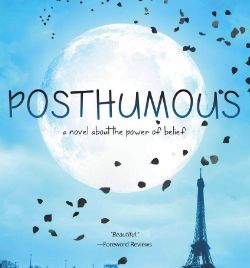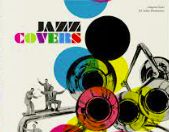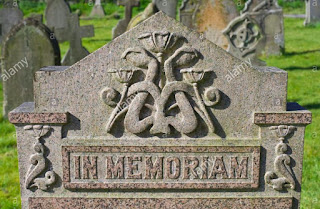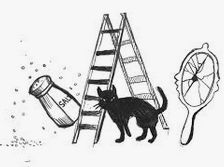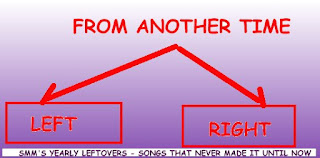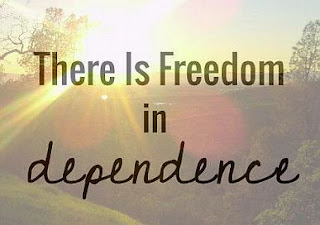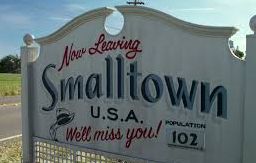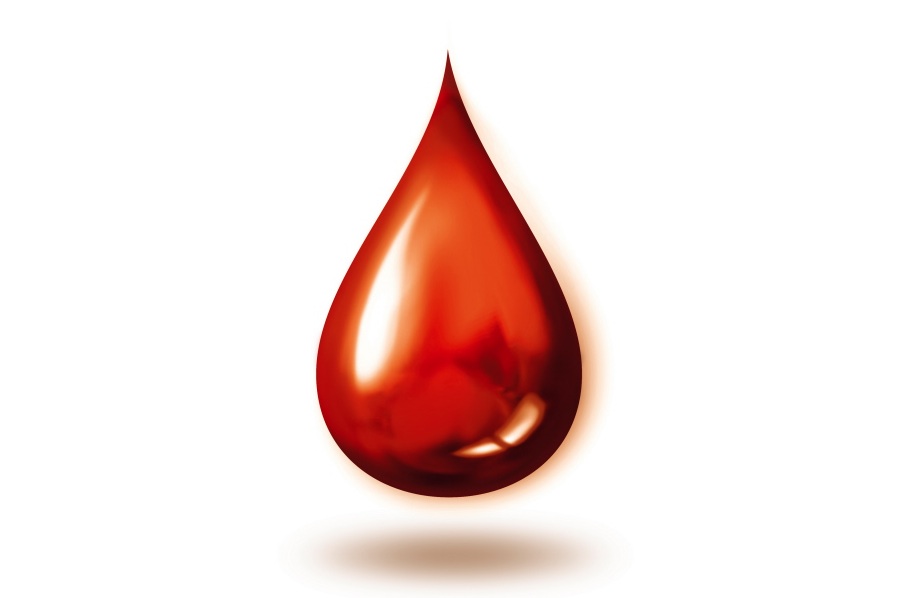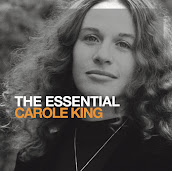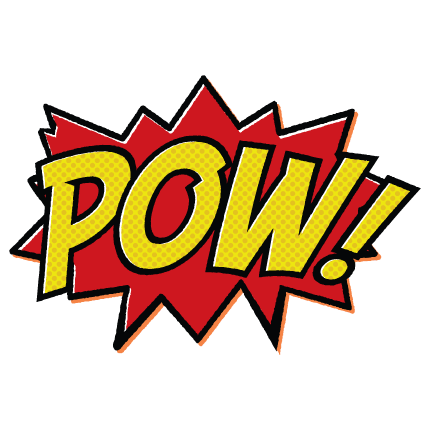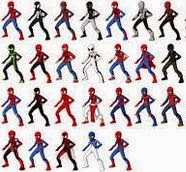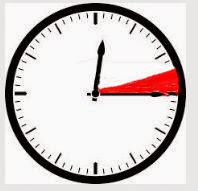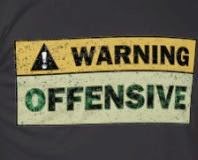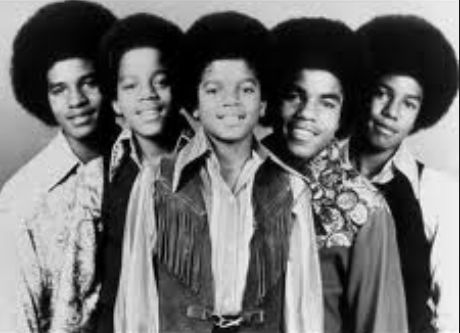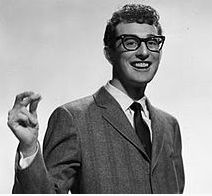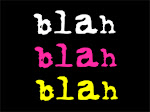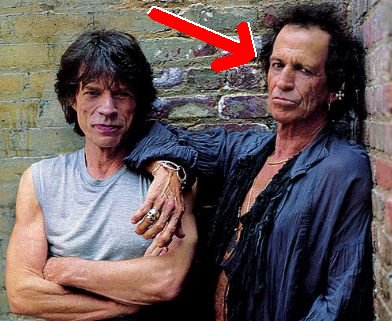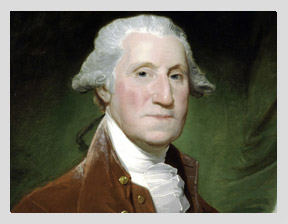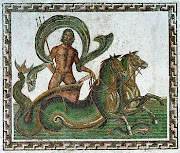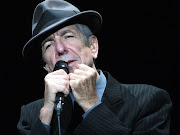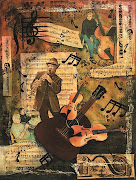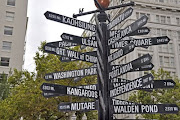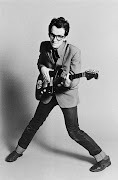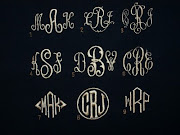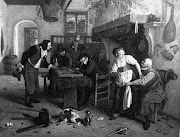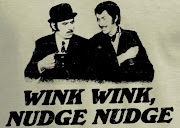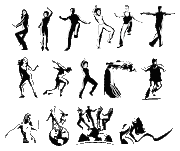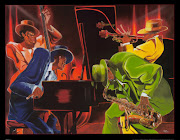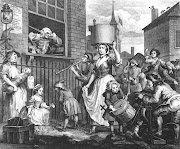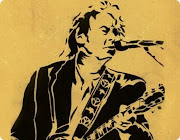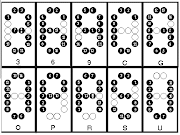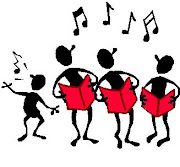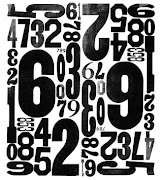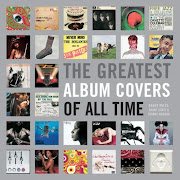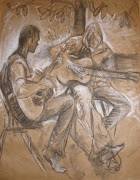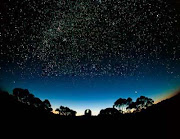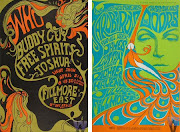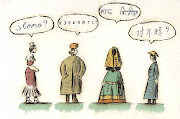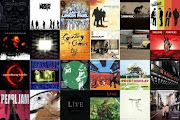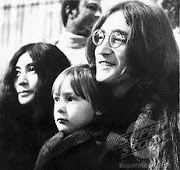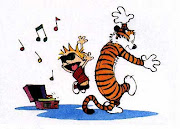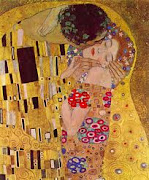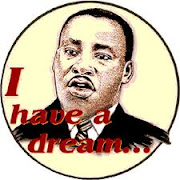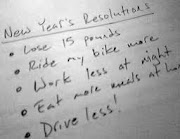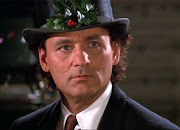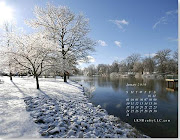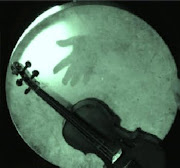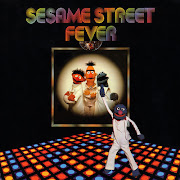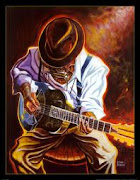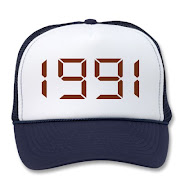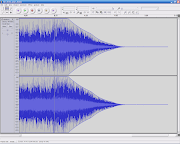
Emmylou Harris: Every Grain Of Sand
[purchase]
In the time of my confession, in the hour of my deepest need
When the pool of tears beneath my feet flood every newborn seed
There's a dyin' voice within me reaching out somewhere,
Toiling in the danger and in the morals of despair.
I love me some Emmylou. She's feeling it here, I think. Good stuff.
Saturday, October 11, 2008
Dylan Covers: Every Grain Of Sand
Posted by Paul at 10:05 PM View Comments
Dylan Covers: Clothes Line Saga/ Simple Twist of Fate
First of all, let me say that these two songs have two things in common: they are both by Dylan, and I wanted to post both. I put them together because I wasn’t sure I would have enough time for two posts.
Suzzy and Maggie Roche: Clothes Line Saga
[purchase]
Bob Dylan has an impish side. Some of his songs seem to have been written in response to his reputation as a profound songwriter; the attitude seems to be, “Let them try to find a profound meaning for this. Heh, heh.” I think Clothes Line Saga is one of these songs. It sort of tells a meandering story about a family waiting for their clothes to dry on the line in January, and goes a lot of places without getting anywhere. The playfulness of it appealed to the Roche sisters, Maggie and Suzzy in this case. Add the third sister Terri and you have The Roches. They have certainly shown a playful side of their own in their work. Incidentally, as far as I can tell, the Roche sisters are the only ones who have recorded a cover of this song.
Dave‘s True Story: Simple Twist of Fate
[purchase]
Bob Dylan, of course, emerged from the Greenwich Village folk scene of the 1960s, along with Joan Baez and many others. Dave’s True Story emerged from the Greenwich Village folk scene of the 1980s, which gave us Suzanne Vega and many others. The 80s scene was fueled by Fast Folk Musical Magazine. Fast Folk released albums on a regular schedule which collected folk artists who were active in the Village folk clubs at the time. For many, this was the artist’s first recorded work, and careers were built.
Dave’s True Story perform what might be called pop-folk, with a strong jazz flavor. They cite Cole Porter and George Gershwin as major influences. Their version of “Simple Twist of Fate” comes from the album Simple Twist of Fate: DTS Does Dylan, which is pretty much what it sounds like.
Posted by Darius at 3:29 PM View Comments
Labels: Dave's True Story, dylan covers, suzzy and maggie roche
Dylan Covers: The Dylan Sound
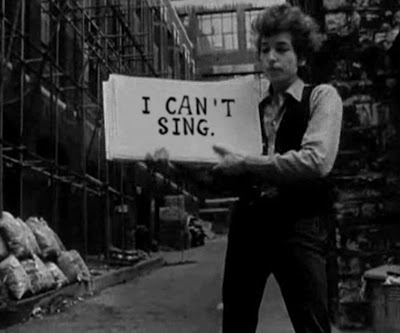
Angel Snow: Meet Me In The Morning
[purchase]
Chris Smither: Visions of Johanna
[purchase]
Vic Chesnutt: Buckets of Rain
[purchase]
Ramblin' Jack Elliott: Don't Think Twice, It's Alright
[purchase]
I'm a relative newcomer to Bob Dylan fandom, having grown up immersed in a very different, more melodic branch of the folkworld. And I came to that fandom through covers, and thus have spent much more time considering the songbook than I have considering the particular vocal and guitar folkstyle which, love it or hate it, is inimitably unique and Dylanesque. So it's only very recently that I've started to appreciate that carefully constructed nasality, the broken-voiced rawness which Dylan chose to evolve in himself, the better to make meaning in song.
I'm not the best candidate to explain Dylan's particular sound, and I don't think I need to. A library of books and reviews and films have been written on the subject, and it's also true that the Dylan sound is so iconographic, both as sound and as influence, it kind of speaks for itself. But as this wonderful week's journey through the Dylan songbook has progressed, I've found myself thinking about how difficult it is to cover Dylan's tone successfully. I would even posit that the ragged musical trappings are one of the biggest reasons why Dylan songs are so universal and coverable, so much and so immediately a part of the folkways of the larger culture. Which is to say, just as the older folk of Robert Johnson and Blind Willie Johnson are so mutable in the hands of others due to their own stripped down, prototypical recorded form, one of the functions of Dylan's almost tuneless approach to song is to make those songs seem more available for others to finish in their own way.
As I came to understand the power of this deliberately fundamental, elemental nature of Dylan's performance, I have grown to appreciate Dylan for more than just his songwriting and composition. And so, though I used to lean towards fuller production in my own musical taste, I increasingly respect the rawer, more elemental folk musicians, like Nick Drake and Elliott Smith and, more recently, Denison Witmer and newcomer Angel Snow, who, with just guitar and slightly wobbly voice, seem to be working in that same space where Dylan worked.
So I thought it would be worth looking for Dylan covers which try to bring that same sense of rawness to the performance -- songs which, in their own way, seem to be covering both Dylan's song and Dylan's connection with the baseline of emotion and sound that make song so direct a connection between performer and culture. Here's a few of my favorites from that camp, as a kind of end-of-week celebration of Dylan's influence beyond song itself.
Posted by boyhowdy at 12:49 PM View Comments
Labels: Angel Snow, Chris Smither, dylan covers, Ramblin' Jack Elliott, Vic Chesnutt
Dylan Covers: Byrds Play Dylan
Byrds: Positively 4th Street [Untitled 1970] [purchase]
Byrds: Mr. Tambourine Man [Royal Albert Hall 1971] [purchase CD] [purchase LP]
Byrds: Chimes Of Freedom [Fillmore West 1969] [purchase]
Byrds: You Ain't Goin' Nowhere [Untitled 1970] [purchase]
Byrds: This Wheel's On Fire [Fillmore West 1969] [purchase]
At Dean's request I put together a gaggle of Dylan covers performed by The Byrds. Since a few studio cuts have already been posted, I decided to stick with live versions. If nothing else, the entirety of the Byrds/Dylan catalog showcases the peculiar empathy Roger McGuinn had for Bob's work. But, these five songs also stand out for me ... and surely you saw this coming! ... because they highlight Clarence White's brilliance as a sideman. "Chimes Of Freedom" and "This Wheel's On Fire," in particular, have some incendiary guitar passages, but the stutters, filigrees, and flourishes throughout are typically genius.
Incidentally, way back in 1964, Clarence was given a demo of "Mr. Tambourine Man" by then-Byrds producer, Jim Dickson, for a possible solo release. This was about the time The Kentucky Colonels were slowing down and CW's interest in rock 'n' roll was perking up and a solo release made sense. Clarence passed on the song, so it went to the artist standing in the on-deck circle, The Byrds. Will the circle be unbroken ...
Posted by LD at 11:10 AM View Comments
Labels: dylan covers, The Byrds
Friday, October 10, 2008
Dylan Covers: Baby You've Been On My Mind, Part II

Linda Rondstadt: Baby You've Been On My Mind
[purchase]
I don't have much to say about this one, other than to point out that Linda Rondstadt's early stuff on Capital Records was some pretty gosh darn sublime country pop. (The Best of the Capital Years double disc is well worth the investment. Read about it here.)
For The Beatles version, see here.
Posted by Paul at 11:40 PM View Comments
Dylan Covers: I'll Be Your Baby Tonight
(Note: Astute readers may recognize the material below; Star Maker Machine reader Duncan sent in this unusual entry via an earlier comment. It's not our usual fare, but given the high novelty value of the covers, we decided to accept it just this once...)
Goldie Hawn and the Buckaroos: I'll Be Your Baby Tonight
[purchase]
Emmylou Harris: I'll Be Your Baby Tonight
[purchase]
Burl Ives: I'll Be Your Baby Tonight
[purchase]
Ray Stevens: I'll Be Your Baby Tonight
[out of print]
From my obsession with the Highway 61 Revisited LP (at age 14 in 1965), which was literally a year long sentence (I renewed the mono copy on loan from the Rochester Public Library bi-weekly for a year) I struggled to get the same feeling with the two follow-up Dylan LPs.
Though I drank every drop from ‘Blonde on Blonde” and “Self Portrait” that I could, it wasn’t until “John Wesley Harding” that I found the same spirit again in Dylan’s records. The whole LP came back from the accident in a post-Great White Wonder world where there were Dylan songs all over the airwaves, satisfied by full radio station promo bins with overflowing with bad, good and great Dylan covers. Try looking for Stone Country (early Steve Young) on an RCA 45 doing the ironic ‘Million Dollar Bash’ or The Coven (yes, the same Black Mass group and ‘One Tin Soldier’ group) on S.G.C. (same label as The Nazz) doing a transcendent version of “I Shall Be Released” for two of the greatest (maybe for another post). Of course, there was The Band, The Byrds and Manfreds’ versions of any Dylan and Peter, Paul & Mary, a surprisingly okay version by Goldie Hawn & The Buckaroos, a predictably good version by Linda Ronstadt on ‘Home Grown, Hand Sown’, Rita Coolidge, other lost versions (The Hollies, The Walker Brothers) and an early embarrassing take by Emmylou Harris and a whole lot of crappy easy listening takes of “Lay Lady Lay” by singers like Jim Nabors and the either-you-like-it –or-you-don’t versions by Sebastian Cabot.
“I’ll Be Your Baby Tonight” was and has been one of Dylan’s most popular songs covered over many times, right up to the mid 1980s when Robert Palmer put his sophisticated stamp on a version and Kathy Mattea made her Mercury Record’s chart debut on 45 with her beautifully strong & stark country take. [I haven’t heard this one in ages and have never seen it on her Greatest Hits collections. Anyone got this somewhere?]. Maria Muldaur revisited it on her recent Dylan tribute. Can’t find my Judy (Collins) Does Dylan to check on there (a very disappointing project). I gotta believe there are a whole lot of versions I’ve never heard and a few more I’d like.
The earliest two covers I latched onto were done by pop music veterans seeking new acceptance in this hip cover sweepstakes. There was beginning to be a lot of attention given to the post-Dylan songwriting community and it was clear that it resided beyond the traditional folk circles centered mostly on the East Coast. Nashville was VERY accepting of Dylan’s songs, certainly in part to Johnny Cash’s embracing. SO it is very natural to see Burl Ives and Ray Stevens ply their creativity on this song.
Burl Ives’ take of “I’ll Be Your Baby Tonight” (the rip I have has to be taken from a Columbia white label promo 45 as I’ve never seen a stock or promo Columbia LP with this one on it…anyone else?) sounds like a classic Nashville late 1960s production, though I can’t be sure no longer owning the artifact itself. I like the instrumental backing mix: it was a good mixture between hip and NOT as cloying as many country-politan contemporary Nashville LP cover-stuffers could be. Burl’s voice is very appealing to me on this one…a little Jimmy Crack Corn & Blue Tail Fly memory, maybe? I’m pretty sure his last LP on Decca was cut in 1967 and released in 1968 so as far as I know, this 1968 Columbia 45 may have been his major label recording swansong or very near it. I know he toured through the 70s and 80s, probably doing some private releases. I would love to hear more of Burl from this era.
Ray Stevens’ version of “I’ll Be Your Baby Tonight” (it’s a vinyl rip with some ticks…sorry) comes from his 1969 Monument Records LP, ‘Have A Little Talk With Myself”. Jerry Kennedy on guitar and Norman Putnam on bass anchor this project, with an 18 piece orchestra of strings and horns under the direction of Mr. Stevens. Co-Producer & Co-Engineer Jim Malloy says in his Technical Notes:
“In addition to doing all the arrangements on this album, Ray Stevens … sings ALL the voices ... plays the piano, organ, bells and any other special effect instruments … and plays the trumpet solo on ‘Spinning Wheel’”
In re-listening to this version, I heard it first in MP3 form, then I dug out the vinyl I have and gave that a listen. I looked for Charlie McCoy (also signed at the time to Monument) in the credits on harmonica because I really love the multi-tracked harp on this cut. No Charlie. It’s RAY, simulating Charlie playing multiple lead harmonica lines with his voice into a harp horn section, a Harmony Vo-conica (my term) if you will. Its addition belies the years of schooling Ray received as a pop-novelty maestro tailoring arrangements to best sell the content of a song [think ‘Ahab’].
This is his LP follow up to the previous year’s breakthrough containing “Unwind” and “Mr. Businessman”, showing the ‘serious’ side of Ray Stevens. The LP contains 3 Beatle songs (Fool On The Hill, Help & Hey Jude), 2 from ‘Hair’ (Aquarius & Hair), Kris Kristofferson’s “Sunday Morning Coming Down”, Joe South’s “Games People Play”, Mike Settle’s “But You Know I Love You” Blood, Sweat & Tear’s “Spinning Wheel” and two from Stevens pen. “Have A Little Talk with Myself” is the single that made it, though I once owned white label promo 45s of “I’ll Be Your Baby…” and “Sunday…”. I’ve wonder if those 45 mixes were a little different. I sure listened to them a lot and played them when I could as a club DJ over the years. Ray really continues applying the same kind of unique audio trademark he leaves on this song throughout the whole LP. I wonder if it has been reissued…pairing it with the previous Monument LP would be ideal as a double and I think a lot of people would sure dig it.
Guest Post Submitted by Duncan
Posted by boyhowdy at 8:33 PM View Comments
Labels: Burl Ives, dylan covers, Emmylou Harris, Goldie Hawn, Ray Stevens
Dylan Covers: The Times They Are a-Changin'
The Beach Boys: The Times They Are a-Changin'
[purchase]
This protest song has been covered by a ton of artists including Simon and Garfunkel, Nina Simone, and Joan Baez, but I personally think the Beach Boys version has an interesting resonance. This cut is off the Beach Boys Party album, a contractual obligation but still a gem that musn't be overlooked. The change I think of when Al Jardine sings this song is not political, but cultural. Although they would release the best album of all time following Party, the Beach Boys would sadly become irrelevant and out of style. In this track, you can hear the naiveté and irreverence in the face of "important" music that would help the Boys become cultural dinosaurs.
'The Beach Boys,' under Mike Love and known as "America's Band," probably wouldn't have brought this cover out when they performed at the Republican National Convention.
Posted by Brendan at 1:12 PM View Comments
Labels: dylan covers, The Beach Boys
Dylan Covers: Masters of War

In planning my posts for this week, I remembered that the blogosphere was all abuzz a while ago with Pearl Jam’s cover of Dylan’s “Masters of War." Here we had the meeting of two religions, the cults of Dylan and Vedder getting together for interfaith services. While I admire both, I don’t share the devotion of either group of fans, and I wound up not even playing the song when everybody was posting it. I had never even heard Dylan’s original until this week.
Now that I have, I must say that it is not Bob Dylan’s best work. The lyrics express a view that I absolutely agree with, but I find them angry and strident. The arrangement is simple, just a driving acoustic guitar and voice, but there is not much variety, and a song which is on the long side is made to feel even longer.
So why am I posting this? Given the simplicity of Dylan’s original, something remarkable happens when the song is covered. Some artists treat the song almost as an unfinished work, and feel free to fill out the arrangement and make it their own. And some of the results are amazing. And the words inspire some great impassioned vocal performances.
Martin Simpson: Masters of War
[purchase]
Martin Simpson is originally from England, where he started his career in folk music. Wanting to add some traditional American folk stylings to his guitar playing, Simpson came to the United States, and wound up staying. Simpson replaced Dylan’s guitar part with his own, to great affect. Simpson’s vocal style is very much in the English folk tradition, the song works very well delivered this way.
Bill Frisell: Masters of War
[purchase, available in mp3 format only]
Bill Frisell is one of the finest jazz guitar players working today, no wait! Bill Frisell is an Americana artist who specializes in instrumental numbers with a jazzy flavor... Perhaps it’s best just to say that Frisell’s music fits in the cracks between musical genres. I’ve often wondered what his music would sound like if he worked with a singer. It would have to be someone who could also straddle the line between jazz, blues, and country. Cassandra Wilson would be an obvious choice, and I would love to hear that, but I was actually thinking of...
Maria Muldaur: Masters of War
[purchase]
... Maria Muldaur. Now, if you’re thinking of “Midnight at the Oasis”, you must think I’m crazy. But as Maria Muldaur has aged, her voice has become richer and deeper, and she has learned to use it as a great jazz and blues instrument. Her take on “Masters of War” came out on her newest album this past July. This is her first album of all political material, which says a lot about the times we are living in.
Posted by Darius at 3:20 AM View Comments
Labels: Bill Frisell, dylan covers, Maria Muldaur, Martin Simpson
Thursday, October 9, 2008
Dylan Covers: This Wheel's On Fire
Julie Driscoll, Brian Auger & The Trinity: This Wheel's On Fire
[purchase]
This Wheel's On Fire was written by Bob Dylan and Rick Danko during the sessions for The Band's 1968 album, Music From Big Pink. Today's cover comes from Julie Driscoll, Brian Auger & The Trinity, whose psychedelia adaptation scored a hit, landing at #5 on the UK singles chart. Fan's of the comedy series Absolutely Fabulous will recognize Driscoll's early 90's remake, which was the show's theme song.
I prefer this to The Band & Dylan versions, I like the trippy flanger effect and the swirling Hammond B3 organ, it's a bit like being on a carousel. Check it out yourself and see what you think.
Posted by Anonymous at 6:56 PM View Comments
Labels: Brian Auger, dylan covers, Julie Driscoll, Trinity
Dylan Covers: My Back Pages

The Byrds: My Back Pages
[purchase]
The Byrds are well known for their many excellent Dylan covers. My favorite is probably their version of My Back Pages.
I like Dylan’s recording of the song mostly because of it's great lyrics, especially the famous refrain: “Ah, but I was so much older then, I’m younger than that now.” One of the great lines in rock music. Musically, Dylan’s version employs a foreboding tone, which is appropriate for the darker themes in the song: “In a soldier's stance, I aimed my hand at the mongrel dogs who teach, fearing not that I'd become my enemy, in the instant that I preach.” In Dylan's voice, the song is a rejection of the false idealism of the "protest" movement.
The Byrds’ folk-rock style completely transforms the song, as the best covers do. The jangly guitars, amped-up melody, and reassuring vocal harmonies, take the edge off the song--but in a good way, I think. The effect is to infuse the song with a youthful, hopeful feeling that stands in contrast to the darker lyrics in the verse, but which perfectly matches the song’s “I’m younger than that now” refrain.
In this way, the song itself is conflicted. The result is one of the most iconic pop songs of the 1960’s.
Posted by Paul at 11:22 AM View Comments
Dylan Covers: Mama, You Been On My Mind
The Beatles: Mama, You Been On My Mind (h/t BWF)
[purchase]
It's been a great week at Star Maker Machine because Bob Dylan's music crosses all boundaries - as he once said, he's never understood any kind of border patrol when it came to music. It's brought a special synergy, giving the bloggers here a chance to expose Bob's tunes as they've been performed in the different genres we specialize in.
The sign of a strong song is when it can be interpreted in many differing forms - as we've heard this week, Dylan's been covered across the board by musicians of every stripe and style. I feel it's especially interesting how many mega-superstars covered Bob's music, most of them with strong interpretations of their own.
A fun aspect of being a Dylan fan is all the great mythology that surrounds him - a bit of it true, a whole lot of it exaggerated. But it all fits the man who's loomed larger than life in pop culture for the last half-century. On that note, one of my favorite stories is from 1964, how Bob introduced The Beatles to marijuana for the first time - for better or worse, think of how big a part that played in the band's future songwriting process. I also wonder if they had the munchies - did John order some Sicilian pizza pies to be delivered to the Hotel Delmonico? Anywhos, it was the beginning of a long, fruitful association with the Liverpoolians. At one point, George Harrison started recording an album of Dylan covers that he never finished.
Here's George in the studio during the Let It Be sessions covering Mama, You Been On My Mind. Get a little taste of what could have been.
Posted by Anonymous at 4:35 AM View Comments
Labels: dylan covers, The Beatles
Dylan Covers: If Not For You, Too

Derek Webb and Sanda McKracken: If Not For You
[purchase]
We've gotten into the habit of leaving also-rans in the comments here at Star Maker Machine, but I couldn't resist following up on Paul's previous post on Olivia Newton John's surprisingly amazing cover by offering this very recent recording of the same song by married Christian singer-songwriters Derek Webb and Sandra McKracken as a full-fledged post. Contemporary Christian music isn't my thing either, but I claim awesomeness: warm voices, delicate, sparse harmonies, acoustic strings, and the perfect hint of imperfection in the performance, just like Dylan would have wanted it. Now that's folk music.
Posted by boyhowdy at 12:03 AM View Comments
Wednesday, October 8, 2008
Dylan Covers: If Not For You

Olivia Newton John: If Not For You
[purchase]
This one goes out to the one I loved.
It’s not the definitive cover version of this song (see George Harrison for that), but it’s not bad. I include it here because I had a mad crush on Olivia back in the 1970’s when I was just a little toeheaded kid and she was an Aussie mega-star. Those were happy times. . .
Posted by Paul at 11:38 PM View Comments
Labels: dylan covers, Olivia Newton John
Dylan Covers: With God on Our Side
 Buddy Miller: With God on Our Side
Buddy Miller: With God on Our Side
[purchase]
I will never forget the first time I heard this song. It was one of the most moving musical experiences of my life.
In 2004, I was attending the American Music Conference in Nashville, TN. It was my first time at the conference, and there were many "Wow!" moments that took place that week. I met Steve Earle at the bar at The Mercy Lounge, discussed politics and The Dixie Chicks with Chuck Meade from BR549, and watched in awe as Michelle Shocked and Adrienne Young square danced with each other at The Station Inn as The Avett Brothers stomped and screamed their way around the stage. It was a magical weekend of music to be sure.
The absolute highlight of the weekend, however, was hearing Buddy Miller sing "With God on Our Side" at the Mercy Lounge. I'm not a Dylan historian like some, so I had never heard the song before. I didn't know that it was written over forty years ago... it sounded as though it was ripped from the headlines of the day.
The song is simple in concept... a contemplation on the Glory of God and the atrocities of war and the idea the belief in one somehow justifies the other. In 2004, a time of escalating aggression in Iraq, the topics of God and government, religion and war, were once again heavy points of discussion. This song captures the essence of that debate eloquently and succinctly and forces the listener to ask some tough questions.
Miller's performance of this song on that night came out of the blue and held a room full of artists, industry insiders, and just plain old music fans in rapt attention. It was as powerful a performance as I have ever been witness to. Many in the room were in tears at the end of the song.
I returned home from the conference to find the copy of Miller's Universal United House of Prayer album that had been delivered to the station during the conference. Wisely, Miller included his cover of "With God on Our Side." It was another excellent release from Buddy Miller, and the centerpiece of the album was that song. It came as no surprise to me when Buddy Miller won both Artist of the Year and Album of the Year at the 2005 Americana Music Awards and Honors Show. Nobody who was at the Mercy Lounge the year previous could have voted for anyone else.
Posted by Nelson at 8:39 PM View Comments
Labels: Buddy Miller, dylan covers
Dylan Covers: Rock Me Mama becomes Wagon Wheel

Old Crow Medicine Show - Wagon Wheel
[purchase]
Bob Dylan - Rock Me Mama
[from Genuine Bootleg Series Vol. 1...out of print?]
Today I am gonna mix it up a little. I originally posted the below back in May of 2007 on ninebullets.net. I got so many emails about it that I reposted it in October of last year. It has easily been the most popular post on the site so I decided to post it over here. I hope y'all enjoy it even though it's on the fringes of this weeks theme.
Here you go:
This morning I was sitting here listening to the new cd, Two Bottles Of Wine by Jason Webley and Reverend Peyton. At the end of the cd is a cover song that I instantly recognized as Old Crow Medicine Show’s, Wagon Wheel. Only, it’s labeled as Rock Me Mama (Bob Dylan Cover).
huh?
I am no Dylan expert but I thought if Wagon Wheel was actually a Dylan cover I would have known by now. This seemed like a job for Google. After a little looking I found this explination from OCMS’s Keith Secor:
“It’d be my pleasure to dispel the myth and rumor about the song Wagon Wheel, or “Rock Me Mama” as Bob Dylan himself called the song when he recorded it down in Mexico in 1972 for the soundtrack of Pat Garrett and Billy the Kid. This song was not released, and it was not finished either, this is a demo of a practice session of him, Rob Stoner, and a couple of gals doing the chorus over and over again while the bass player learns the bass line. That’s what I heard on a German bootleg about nine years ago in high school. And I wrote the lyrics to the song because I loved the chorus so much and I sung it in my head for maybe a year straight, and then just penned what I penned, which is something of an autobiographical story about just wanting to get outta town, gettin outta school, and just wanting to go play music. It’s sort of autobiographical like that. But yeah, it’s sort of a Bob Dylan co-write with about 25 years inbetween.”
Well there you go. As the late great Chris Thomas used to say, “That’s why you get up in the mornings. You never know what you might learn.”
Jason Webley and The Reverend Peyton - Rock Me Mama
[Out of Print]
Posted by Autopsy IV at 4:17 PM View Comments
Labels: Bob Dylan, dylan covers, old crow medicine show
Dylan Covers: Going, Going, Gone

Son Volt: Going, Going, Gone [purchase downloadable EP]
The original "Going, Going, Gone" comes from the surprisingly lackluster Dylan/Band reunion album, Planet Waves (1974). Son Volt's cover was included on their promotional Switchback EP, which was released to radio simultaneous with their second album, Straightaways (1997). However, prior to this recording "Going, Going, Gone" was a staple on the band's first tour, way back when Jay Farrar was still tearing up his Gibson SG, Mike Heidorn was drumming, and Uncle Tupelo songs were a regular part of Son Volt's setlists. When I saw them play The Backstage in Seattle (12/11/95) they encored with this obscure Dylan number , The Stanley Brothers' harmony-riffic "She's More To Be Pitied," and Merle Haggard's prison anthem, "Sing Me Back Home." If you can find a better trifecta of roots music consciousness, I'd like to hear it.
Posted by LD at 11:57 AM View Comments
Labels: dylan covers, Son Volt
Dylan Covers: Like A Rolling Stone
Posted by Ramone666 at 6:52 AM View Comments
Labels: Bob Dylan, dylan covers
Dylan Covers: Man Gave Names to All the Animals
So far this week, we have already seen some of Bob Dylan’s remarkable range as a songwriter. He is equally adept at love songs, political songs that become generational anthems, and who-knows-whats that nevertheless resonate with people. But something interesting happens with “Man Gave Names to All the Animals”. The song was originally included on Slow Train Coming, Dylan’s somewhat notorious album where he embraced born-again Christianity; as such, the song is part of a suite of songs which function as an eloquent expression of faith. Dylan’s arrangement of the song was a rock-reggae hybrid.
But the covers of “Man Gave Names to All the Animals” are mostly by folk artists. Taken out of its original context, and given a softer arrangement, the truth is revealed: “Man Gave Names to All the Animals” is a great kid’s song. Not what you usually think of from Dylan.
Townes Van Zandt: Man Gave Names to All the Animals
[purchase]
Townes Van Zandt is one of those tragic figures who litter the pop music landscape. Mostly known during his lifetime to other musicians, it was only after his death at age 52 that his music began to reach a wider audience. “Pancho and Lefty” is probably his best known song. As can be heard here, he was also a fine singer and guitar player.
Tim O‘Brien: Man Gave Names to All the Animals
[purchase]
Tim O’Brien first gained attention as the leader of the bluegrass band Hot Rize in the 1980s. (If you like bluegrass, and have never heard them, do seek them out.) As a solo artist, and in a duo with his sister Mollie, O’Brien has expanded his sound. His version of ”Man Gave...” is from an album of Dylan covers called Red on Blond.
Posted by Darius at 1:03 AM View Comments
Labels: dylan covers, Tim O'Brien, Townes Van Zandt
Tuesday, October 7, 2008
Dylan Covers: Tomorrow Is A Long Time

Nickel Creek: Tomorrow Is A Long Time
[purchase]
Tomorrow is a Long Time was first recorded for the famous (and permanently bootlegged) Witmark Demos in 1963, but the only officially released version is a live recording on Dylan's 1971 Greatest Hits Vol II collection; by then, thanks to early distribution of the Witmark Demos, the song had already been turned from its original delicate campfire ballad to something with a little too much saccharine by such mid-sixties unlikelies as Odetta, Elvis, and Ian and Sylvia. As such there is no real definitive version, and -- since by definition originals are usually considered to be the first official recording -- some confusion in my mind over whether or not this is a cover at all.
Happily, not all "covers" of this song misunderstand its intent so badly. Something about the odd extra-measured trope and rhythm of this older Dylan song has attracted some of my favorite folk artists at their best, from Nick Drake to Sandy Denny to Rosalie Sorrels. And, as with so many Dylan covers, there's still more to discover -- for example, I've recently encountered the below version by the Greek folk-pop singer Nana Mouskouri, and think the light freakfolk touch and etherial, high-vibrato vocals are worth passing along, especially for those who have yet to encounter her work.
But going back through the forty-odd years of this song's existence, none of the covers i have heard hold a candle to the delicate newgrass ballad that Nickel Creek makes of it.
Cover or not, this may be one of my favorite Nickel Creek songs ever. It demonstrates effortlessly just how mature and tightly delivered their sound became in the end, before they decided they were ready to move on. Sara Watkins' fragile, breathy voice on lead is perfect for the sentiment; the mandolin and guitar mix is ringing and airy; make sure you stick around for the lovely fiddle and mando duet.
More, however, I think the song actually speaks to the kind of regret and readiness that the band members, who formed their band in their teens, must have been feeling as they saw the horizon of solo projects and self-reliance approaching. Placed at the very heart of Why Should The Fire Die, their final album before breaking up to pursue solo projects, the song is a perfect bittersweet harbinger of their impending dissipation, and an equally powerful reminder of why their star shot so high, and so quickly, before choosing to go out in that blaze of glory.
Bonus:
Nana Mouskouri: Tomorrow Is A Long Time
[purchase]
Posted by boyhowdy at 9:53 PM View Comments
Labels: dylan covers, Nickel Creek
Dylan Covers: Rainy Day Women #12 & 35
Cross Canadian Ragweed: Rainy Day Women #12 & 35
[purchase]
Admittedly, this song is nowhere near one of Dylan’s best. But it is undeniably one of the most fun. The lead-off track from the seminal Blonde On Blonde is a raucous barroom ballad full of jangly instruments, huge sing along lines, and off-stage banter. What makes Rainy Day Women so intriguing, however, is the mystique behind it. The song’s meaning has been examined and scrutinized for years. On the surface, the casual listener will undoubtedly hear the persuasion to partake in illegal activity. Upon further review, one may realize that Dylan means “stoned” in the proverbial sense. But to take the song into any further consideration will only confuse the listener more. Dylan, in one of many slaps-in-the-face to interviewers, once described the song like this:
“Rainy Day Women #12 & 35 happens to deal with a minority of, you know, cripples and Orientals and, uh, you know, and the world in which they live,.... It’s another sort of a North Mexican kind of a thing, uh, very protesty. Very, very protesty. And, uh, one of the protestiest of all things I ever protested against in my protest years.”
Cross Canadian Ragweed covered the song on their 2001 release Live and Loud at the Wormy Dog. The Wormy Dog Saloon in Stillwater was the home venue for the Oklahoma band (among many others) in their early years. Because of the song’s live setting in a small bar, this cut contains many similarities to Dylan’s version – and it is just as fun.
As far as the meaning behind the song – I believe Dylan achieved his goal – to create a tune that people would be talking about for years, with no answer as to the writer’s intentions. Why is this the only song on the album to feature a full horn section? Why did he choose to lead off album with it? And what’s with the numbers 12 and 35? I have no answers for you, but just for fun, multiply them together…..
Posted by Payton at 8:11 PM View Comments
Labels: Cross Canadian Ragweed, dylan covers
Monday, October 6, 2008
Dylan Covers: You Ain't Goin' Nowhere
Glen Hansard & Marketa Irglova: You Ain’t Goin’ Nowhere
[purchase]
I know it’s way too easy to pick a song off the I’m Not There Soundtrack – but this one is worth the simplicity. You all know Glen Hansard & Marketa Irglova, their love affair, their movie, and their various awards. But if for some reason you don’t, I’ll enlighten you.
Glen Hansard is an Irish singer/songwriter and frontman of the Irish rock group The Frames. In 2006, he teamed up with a classically-trained, Czech multi-instrumentalist Marketa Irglova to make the music-inspired indie film Once. It follows the paths of two struggling musicians that fall in love while making music together in Dublin. The film – which is a must-see for any fan of good music – won the World Cinema Audience Award at the 2007 Sundance Film Festival. The duo’s song Falling Slowly won the Academy Award for Best Original Song in 2007. As fate would have it, the two began dating while filming the movie. Together, they are known as The Swell Season and put out a self-titled album following the release of the movie.
You Ain’t Goin’ Nowhere appeared first on Dylan's Greatest Hits, Vol. 2 in 1971. For some reason this song always inspires visions of folks sittin’ around in a picking circle playing the most appropriate tune to fit the mood – one of pure jubilation. No matter who’s doing the song, that feeling emanates through thanks to the power of Dylan's words.
"Whoo-ee, ride me high
Tomorrow's the day
My bride's gonna come
Oh, ho, are we gonna fly
Down in the easy chair."
Posted by Payton at 11:06 PM View Comments
Labels: dylan covers, glen hansard, marketa irglova
Dylan Covers: Absolutely Sweet Marie

Jason & The Scorchers: Absolutely Sweet Marie
[purchase]
"Well I don’t know how it happened, but the river boat captain, he knows my fate...”
This is not a well-known Dylan cover, but I think it's one of the greats. Jason & The Scorchers take the song in the same direction Dylan was going, but a step farther.
Because of exciting songs like this, Jason and Scorchers embodied 1980's cowpunk. (Now that's sayin' something!) If you're the slightest bit intrigued, the two-fer CD featuring the Fervor EP and Lost & Found LP is a must own document.
Miscellaneous Info/Personal Touch: This song provided the inspiration for my daughter's middle name. (My son is Hank. Are you surprised?)
Posted by Paul at 10:49 PM View Comments
Labels: dylan covers, Jason And The Scorchers
Dylan Covers: Highway '61 Revisited
PJ Harvey: Highway '61 Revisited
[purchase]
Highway 61 was famous for being the highway of the blues, as it led to New Orleans. Many blues songs mention it, and Dylan's song certainly is a homage to those roots.
I can't say it's her best work, or even that she should be covering the song at all, despite being a big fan of her work, the angry prototypical early PJ Harvey style seems to be an odd fit. The toe-tapping bluesy quality Dylan gives the song seems to fit, and her more angry, though unique, version is an odd take on the classic. But it's worth a listen all the same as it gives it a whole new flavor.
Posted by Anne at 10:45 PM View Comments
Labels: dylan covers, pj harvey
Dylan Covers: Lord Protect My Child

Susan Tedeschi: Lord Protect My Child
[purchase]
As a coverblogger specializing in folk music, I've posted dozens of Dylan covers in my day, and though there's sure to be some songs too good to pass up, my personal goal not to bring too many repeat tracks to the table this week isn't likely to be much of a challenge: even if I stick to the folkworld, I'm sure to find dozens more tracks as-yet unposted, ripe for the sharing. But sifting through the collection this afternoon, looking for Susan Tedeschi's wonderful blues cover of Don't Think Twice, It's Alright (which I've included as a bonus track below), I finally took a shine to Tedeschi's other Dylan cover, a surprise after months of false starts and half-hearted dismissal. Since I can only assume others are likely to experience their first listen as I have, I'm asking you to trust me today, folks: there's something about this cover that merits listening enough times to appreciate it.
New England blues phenomenon Susan Tedeschi is an acceptable vocalist, but she's really most notable for her blazing blues guitarwork; as such, though this is ultimately a relatively faithful rendition of Dylan's mid-eighties melody, those who listen for the vocals to match the yearning keen of Dylan's original father's prayer, originally released on The Bootleg Series Vol. 1-3, may miss the point. And this track is also an anomaly for Tedeschi, one much slower and production-heavy, easily dismissed as one of very few weak cuts on her otherwise-stellar, unusually broad-ranging 2005 covers album Hope and Desire.
But listen again, with an open mind, and remember that Hope and Desire is predominantly a turning point for Tedeschi, one which attempts to redefine her as a frontwoman as much as her previous work defined her as a soulful guitar virtuoso. Instead of her usual raw vocals and loud blues jam guitar mastery, it is the retro gospel blues arrangement (complete with piano and choir), and the subtle touch on the slide which emerges slowly from the stew of sound after the halfway mark of the track, building to a stunningly subtle yet powerfully emotive instrumental solo, which stand out here. The subtlety is not Tedeschi's strong point -- she really shines better on blazing bluesfunk -- but that just makes the song's success all that more effective, when it comes down to it.
It helps, of course, that I consider this to be one of Dylan's most powerful songs. Maybe you have to be a father to understand, but the sentiment -- that your child could be an object of such wonderment, it makes you consider your own mortality with new stakes; that you might thus fear and pray for his safety, should you suddenly not be around -- cuts right to the heart. Turning Dylan's vocal wail into a guitar cry makes it no less powerful; indeed, splitting off the lyric from the instrument of its sentiment creates a mature tension and depth in what was once a much simpler emotional approach. For that, Tedeschi deserves her second listen, and then some.
Of course, subtlety isn't the only form of power Tedeschi has at her disposal when it comes to interpreting Dylan. As promised, here's her earlier take on another of his tunes.
Susan Tedeschi: Don't Think Twice, It's Alright
[purchase]
Posted by boyhowdy at 5:17 PM View Comments
Labels: dylan covers, Susan Tedeschi
Dylan covers: Si Tu Dois Partir
Fairport Convention : Si Tu Dois Partir
Posted by Ramone666 at 8:35 AM View Comments
Labels: dylan covers, Fairport Convention
Sunday, October 5, 2008
Dylan Covers: Love Is Just A Four-Letter Word

Joan Baez: Love Is Just A Four-Letter Word
[purchase]
I'm not sure if this counts as a cover. It was written by Bob Dylan but never recorded by him. Joan's is the first version, but you can hear Bob's style in the song's structure and lyrics. In any event, it's a fabulous song and Joan Baez's rendition is quite beautiful. Listen a few times and you'll be hooked.
Here's an interesting story about the song:
"In the 2005 PBS American Masters documentary on Dylan, No Direction Home, Baez told an amusing story of how she was with Dylan, when he first heard her recording of 'Love is Just a Four-Letter Word' on the radio. He commented on it, 'Hey, that's a great song!,' apparently having forgotten that it was he who'd written it."
(Source: Wikipedia).
Posted by Paul at 10:54 PM View Comments
Labels: dylan covers, Joan Baez
Dylan Covers: Sweetheart of the Rodeo
 The Byrds: You Ain't Going Nowhere
The Byrds: You Ain't Going Nowhere
The Byrds: Nothing Was Delivered
[purchase]
I'll leave it to someone else to do the comprehensive The Byrds and Bob Dylan post. But I did want to jump in early with a quick post about two songs from one particular Byrds album that I have once again been listening to quite a bit lately.
1968's Sweetheart of the Rodeo featured a new line up for the band and marked a dynamic shift in The Byrds' sound. The one constant that remained was Bob Dylan.
Of course, The Byrds had tackled many Dylan songs before the release of Sweetheart of the Rodeo. They had not, however, done so under the guidance of the Cosmic American blueprint laid out by Gram Parsons. Parsons helped The Byrds bring a loving country touch to Dylan's "You Ain't Going Nowhere" and "Nothing Was Delivered." It was a bit of a departure from their previous sound.
As part of the marketing plan for this album, Columbia Records had to convince people that... despite the new sound... they were still listening to The Byrds. How could they do that? Listen to this radio spot that promoted the album.
Radio Spot: Sweetheart of the Rodeo
See? That has to be The Byrds. They're singing a Bob Dylan song.
Posted by Nelson at 10:21 PM View Comments
Labels: dylan covers, The Byrds
Dylan Covers: Blowin' In The Wind
Sam Cooke: Blowin' In The Wind [purchase]
When (Sam Cooke) first heard "Blowin' In The Wind" on the new Freewheelin' Bob Dylan album J.W. (Alexander) had just given him, he was so carried away with the message, and the fact that a white boy had written it, that he was almost ashamed not to have written something like that himself. It wasn't the way Dylan sang, he told Bobby Womack. It was what he had to say. "I'm going to write something," Sam told J.W. But he didn't know what it was.
--Peter Guralnick, Dream Boogie: The Triumph Of Sam Cooke, pages 512-13
That "something" turned out to be Sam Cooke's finest moment as a songwriter and one of the artistic high points of the 1960s, "A Change Is Gonna Come." But, before writing "Change," Sam took Dylan's civil rights anthem uptown, during his July 1964 gig at the Copacabana in New York City.
As a bonus, here's a video of Sam singing "Blowin' In The Wind" on the premiere episode of Shindig in September 1964. Keep in mind that this was probably one of the first televised instances of a black man being surrounded by dancing white chicks. No doubt tears of rage were shed all over the country that night.
Posted by LD at 5:17 PM View Comments
Labels: dylan covers, Sam Cooke
Dylan Covers: Like A Rolling Stone

Jimi Hendrix: Like A Rolling Stone
[purchase]
Sebastian Cabot: Like A Rolling Stone
[purchase]
Here are two takes on Bob Dylan’s most famous song. One sublime; the other ridiculous.
While the most acclaimed Dylan cover of all time is probably Jimi’s version of All Along The Watchtower, which took a great song and made it even better, my favorite Dylan cover has always been Jimi’s live take on Like A Rolling Stone. It’s the antithesis of Cabot’s overwrought take. Hendrix's laid-back, slightly-funky version is pure magic. It takes a great song and makes it even more groovy.
Case in point: My favorite part is how Hendrix changes the lyric “the language that he used” to “the sweet talk that he used.”
Yes I know this is the second Jimi post today. Don’t worry.
Posted by Paul at 2:20 PM View Comments
Labels: dylan covers, jimi hendrix, Sebastian Cabot
Dylan Covers: In My Time Of Dying

Be Good Tanyas: In My Time Of Dying
[purchase]
Friends of the Stars: In My Time of Dyin'
[live; more FotS]
Led Zeppelin: In My Time Of Dyin'
[purchase]
One of Dylan's greatest contributions to the world of music was his ability to reframe and reclaim folkways as a generative part of the process of popular music; doing so often meant both resetting and rewriting found or scaveged folksong. This organic process is respectable, but it confounds the issue of attribution, leaving us with such highly contested measures of whether a song is actually "by" Dylan as the extent to which the song resembles older versions, whether Dylan lists it as one of "his" songs on his website, and whether or not Dylan owns the copyright.
In the world of cover blogs, the folk process can complicate the question of whether or not a song is a cover, and if so, of whom. My preference, however, is to respect the artist wherever possible, and here, we are talking about Dylan's ownership, I think, not merely origin. Here, then, we are able to consider citation and attribution as a key component of whether a song "counts" for our covers. And as many songs not technically "by" Dylan, in whole or in part, are treated as "Dylan Covers" by the covering artist, we would be remiss in not attending to such covers as we go through the week ahead.
Nowhere is this phenomenon more visible as it is in coverage of Dylan's seminal version of In My Time Of Dying, first released on his self-titled debut album. Though the song has origins as a gospel blues tune, recorded by Blind Willie Johnson in the heart of the Great Depression under the title "Jesus Make Up My Dying Bed", in Dylan's hands, it was reset as a stripped-down, almost appalachian folktune in the familiar style of the earliest field recordings from the Alan Lomax era.
There is no question that Dylan's performance embodied the song in a way that made it his own. The raw power of Dylan's emerging style, coupled with the familiar spiritual themes of dying and afterlife, made for a powerful statement about broken instruments and the body itself -- one as well-suited for the political and social context of the mid sixties as Blind Willie's version was for the dusty depression-era world into which his own recordings had emerged. Over the next few decades, dozens of covers would emerge, most notably a mystical, metallic mid-seventies bluesrock jam from Led Zeppelin. Some, like the Zepplin cover, would show direct evidence of Johnson's blues take, but all would cite Dylan's weary death rattle as both origin and inspiration.
Where Zeppelin seems to speak of rage at the dying of the light, and Dylan's sparse original evokes the solitary death of age and impending death, more recent covers from the indiefolk world seem more tied to the daily drudge and hardship deaths of younger folks in the older mountains and fields. Here, the three ladies of relatively young Canadian americana band The Be Good Tanyas take Dylan's setting of the tune and flesh it out delicately, adding banjo and brush, crisper rhythm and harmonies, giving what is now (thanks to Dylan) popularly thought of as "originally" a solo acoustic folk tune from the post-war era a "modernized" indie-americana instrumentation and trope. You hear the same slightly jangly new-timey rhythm, albeit almost buried under a drone-y, psychedelic approach, and tinged with manic desperation and wailing resistance, in the Peel Sessions recording from UK-based country/folk band Friends of the Stars, too. The result is a full folkspectrum of covers: three very different ways to die, but all times of dying nonetheless.
For comparison's sake, here's neo-folkie and indie fiddler Andrew Bird with a very recent live version of "the" song which, both titularly and lyrically, appears to reach directly back to the Blind Willie Johnson version. Honestly, you can hear the difference -- this is definitively NOT a Dylan cover.
Andrew Bird: Jesus Gonna Make Up My Dyin' Bed
[live; more Bird here]
Posted by boyhowdy at 1:54 PM View Comments
Labels: Andrew Bird, dylan covers, Friends of the Stars, Led Zeppelin, The Be Good Tanyas
Dylan Covers: All Along The Watchtower
Dave Mason: All Along The Watchtower
U2: All Along The Watchtower
[purchase]
Posted by bwrice at 9:02 AM View Comments
Labels: Dave Mason, dylan covers, U2
Dylan Covers: Mighty Quinn
Manfred Mann: Mighty Quinn
[purchase]
This is a great Dylan song and one of the better covers of his tunes. First off, it's a goofy, fun, playful number that Bob wrote after watching the 1960 Nicholas Ray movie, The Savage Innocents. It starred Anthony Quinn as Inuk, a guileless Eskimo and I'm not sure how Bob was able to stay awake to write the lyrics, it's some damn turgid viewing. The lyrics are a pretty close recap of the film, over the years it's been hilarious to read some of the wild interpretations from Dylan's more rabid fans, convinced his word play was full of deep philosophical meaning.
"We met in a publisher's house as Bob Dylan was making some new material available to other artists. We heard about 10 songs and I thought 'This Wheel's On Fire' would be the one to do, but Manfred liked The Mighty Quinn, which was called 'Quinn The Eskimo' then. It was sung in a rambling monotone but Manfred had recognized its potential. He sold me on the idea of doing this song, but I had to make up some of the words as I couldn't make out everything he was saying. It was like learning a song phonetically in a foreign language. I have never had the first idea what the song is about except that it seems to be 'Hey, gang, gather round, something exciting is going to happen 'cause the big man's coming.' As to who the big man is and why he is an Eskimo, I don't know." - Mike D'Abo of Manfred Mann
Manfred Mann's version reached #1 in the UK Singles Chart and also charted on the American Billboard chart, peaking at #10.
Posted by Anonymous at 5:45 AM View Comments
Labels: dylan covers, manfred mann
Dylan Covers: Drifter's Escape
Jimi Hendrix: Drifter's Escape
[purchase]
I loves me some Jimi Hendrix - I always enjoy having a good excuse to post some of his music. Jimi was one of the best interpreters of Dylan's oeuvre, never making secret that he was his favorite songwriter. Here Hendrix covers Drifter's Escape, one of Bob's lesser-known tunes. This was originally released as part of 1972's Loose Ends, it was the victim of a posthumous Alan Douglas remix. Douglas was infamous for his butchery of Jimi's unreleased recordings, often erasing the original accompaniment and replacing it with studio musicians not familiar with his music.
Thankfully, the Hendrix family was able to wrest control over the master tapes and restored the mixes he made before his death. That's where today's selection comes from - 1997's South Saturn Delta compilation. After years of listening to Douglas' slaughtering of the song, this is a real treat.
Posted by Anonymous at 4:58 AM View Comments
Labels: dylan covers, jimi hendrix
Dylan Covers: I'm Not There
Sonic Youth: I'm Not There
[purchase]
Is there a better way to start this week's theme than with a song from an album of Bob Dylan covers? Director Todd Haynes put together a diverse collection of bands and musicians for the soundtrack of the 2007 Dylan biopic, I'm Not There, to reinterpret and add a fresh perspective to the Bobster's catalogue. Here's Sonic Youth's gauzy take on I'm Not There, from Bob's 1967 Basement Tapes bootleg. Dylan only recorded the song once and never touched it again. Greil Marcus wrote: "I'm Not There is barely written at all. Words are floated together in a dyslexia that is music itself, a dyslexia that seems meant to prove the claims of music over words, to see just how little words can do."
And I'm also hesitating by temptation lest it runs
Which it don't follow me
But I'm not there, I'm gone
Posted by Anonymous at 3:34 AM View Comments
Labels: dylan covers, sonic youth





































